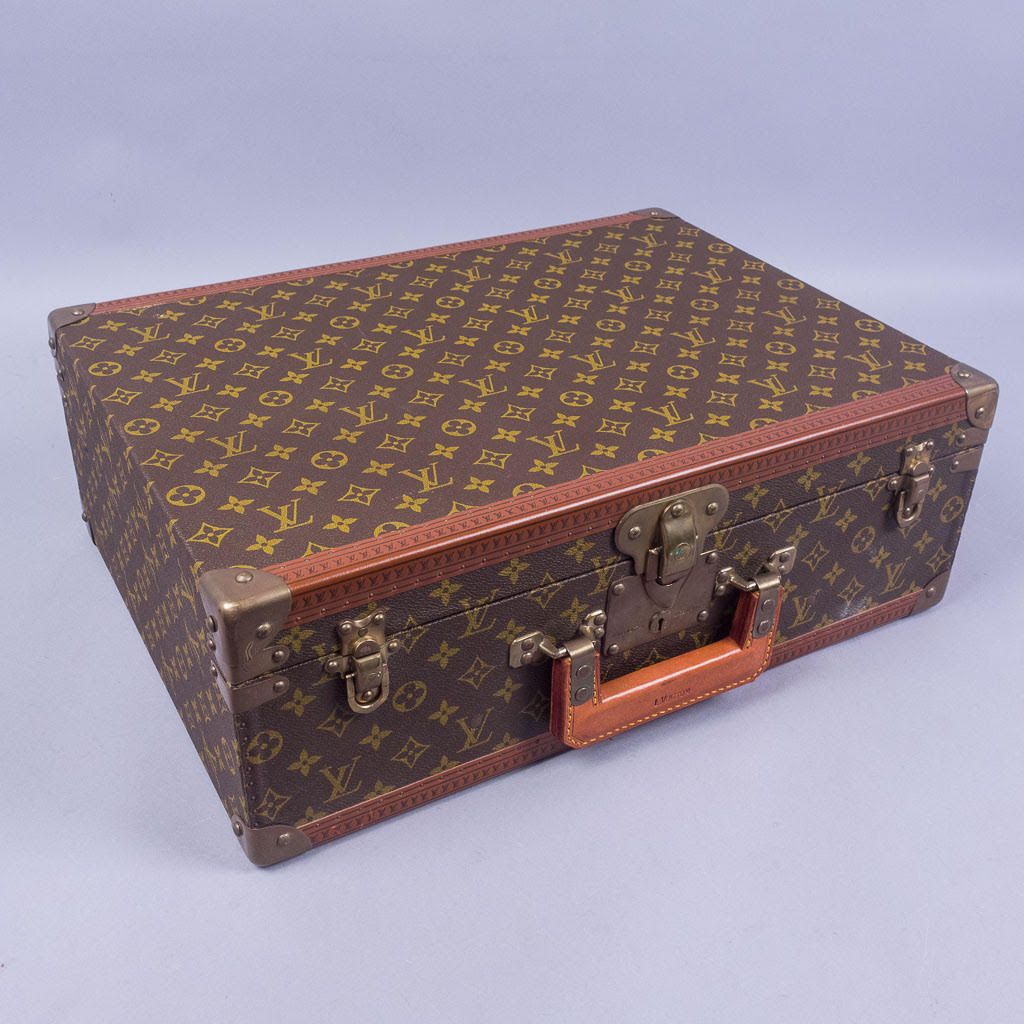
Louis Vuitton: The Evolution of a Trunk Maker
Written by Elyse Shapiro
The Louis Vuitton LV monogram has become one of the most globally recognized insignias. Whether it was seen on a trunk, coat, bag, shoes, or a knockoff, everyone seems familiar with the mark. It is hard to imagine that Louis Vuitton’s history started with humble beginnings when looking at the brand’s colossal success today. A selection of Louis Vuitton items will be offered at the Mark Lawson Antiques’ July 31st, 2021 auction of property from the estate of Mrs. Charles R. Wood.
Early Life and Craft
In 1821, Louis Vuitton was born in Anchay, France to his parents Xavier Vuitton and Corinne Gaillard. Xavier and Corinne were a farmer and a milliner. At the age of 16, Louis Vuitton walked over 450 km from Anchay to Paris to start a new life. He wanted to become a malletier (a trunk maker) in the age of industrialization. Despite Vuitton’s long journey by foot, modes of transportation were quickly evolving and the need for sturdy, reliable luggage was rapidly increasing.
Once he arrived in Paris, Louis Vuitton began to apprentice at the atelier of Monsieur Maréchal. He quickly became a skilled craftsman and continued his work with Monsieur Maréchal for an additional 17 years.
Business Origins
In 1854, Louis Vuitton opened his own luggage business at 4 Rue Neuve-des-Capucines. Four years later, he created his first steamer trunk with masterful craftsmanship. This grey canvas, flat-topped trunk was the first of this design style. It was easily stackable and made with waterproof materials. Previous trunks had rounded tops that allowed water to flow off of them.
Vuitton’s business expanded quickly. One year later he moved his atelier, his wife Clemence-Emilie Vuitton, and their two-year-old son, George, to Asnières-sur-Seine. Throughout history, the atelier Asnières-sur-Seine and the Vuitton family residences have been expanded and preserved. Today, a portion of the family home has become a private museum. The atelier Asnières still operates with 170 craftspeople who create fine custom leather goods for global clientele.
The Next Generation
George Ferreol Vuitton was Louis Vuitton’s only child. He was always surrounded by his father’s work. George learned the malletier craft and trade quickly. Louis sent his son to school in Jersey, France to learn English so that he could better communicate with wealthy clients.
Louis Vuitton steamer trunks had gained traction as a status symbol and often caught the eyes of thieves. In 1886, George designed the ‘unpickable’ Tumbler Lock. Louis and George invited Harry Houdini to pick their patented lock. Houdini declined the offer and the Tumbler Lock is still in use today.
In 1892, at age 70, Louis Vuitton passed away and George Vuitton took the helm of the luxury luggage brand. The next year, George brought the brand out of France and to the worldwide audience at the Chicago World Fair.
Birth of The Monogram
Louis Vuitton hand painted designs on his luggage to prevent cheap counterfeits of his steamer trunk design since 1876. He applied striped patterns, as well as the famous Damier print. After his father’s death, George Vuitton created a new hand painted pattern as an homage. His new canvas features his father’s LV monogram with the iconic quatrefoil and flower design. These classic patterns have been reproduced and reinvented, but are still a pillar of the Louis Vuitton brand.
Daily Downsizing
By 1914, the staff at the atelier Asnières had more than doubled. However, the world of luggage was changing and people were looking for daily use items. George Vuitton always had a fascination with automobiles. Traditional steamer trunks were too large for travel by car. He designed a more compact waterproof, dust proof, stackable trunk that could be used by the daily driver. Louis Vuitton had become an establish status symbol and could be seen in the hands of fashion designer Paul Poiret, photographer Dora Maar, and painter Francis Picabia.
The brand caught the attention of famed fashion designer Coco Chanel. At the time, there was a rise in interested in ladies’ handbags for daily use. In 1925, Chanel and Vuitton collaborated to create a domed handbag, originally dubbed the Squire. In 1955, the Squire was renamed the Alma. With the widespread success of these compact bags, Louis Vuitton continued to produce other styles in the 1930s including the Speedy, the Keepall, and the Noe.
Passing the Torch
George Vuitton lived to age 79. He passed in 1936 in Asnières-sur-Seine and was survived by his wife Josephine and their five children. The eldest son, Gaston Vuitton, took up the family legacy and control of the Louis Vuitton brand.
During Gaston’s tenure, he incorporated leather in the use of the products. The famous Louis Vuitton monogram underwent several redesigns. Gaston also created the cylindrical Papillion bag in 1966.
Louis Vuitton showed continued success in both luggage and handbags. In 1950s and 1960s, jet-setting celebrities were often spotted with their Louis luggage. Italian actress Anna Magnani was once pictured with an entire fleet of cases and bags on a trip to Paris. Coveted Louis Vuitton handbags, such as the Bucket, could be found on popular TV programs like Bewitched.
LVMH
After Gaston Vuitton’s death in 1970, ownership was transferred to his son-in-law, Henry Racamier. Under his management, the Louis Vuitton brand began to open retail locations globally. With the business’s ever-expanding footprint, Racamier convinced financial director, Joseph LaFont, to make Louis Vuitton a publicly traded company in 1984.
By 1987, the Louis Vuitton brand aligned with luxury champagne brand Moët et Chandon and cognac brand Hennessy. These companies formed one of the world’s largest conglomerates, LVMH, Moët Hennessy Louis Vuitton. Today, LVMH holds over 60 subsidiaries with a net worth of €329 billion. Some LVMH brands include Christian Dior, Givenchy, Bvlgari, Celine, Tiffany & Co., and Princess Yachts.
New Leadership and Milestones
Yves Carcelle was appointed president of Louis Vuitton in 1990. It was the first time the company was not under family management. The brand became increasingly fashion focused.
In 1996, in celebration of the 100th anniversary of the Louis Vuitton monogram, the company had six fashion designers recreate their own handbags and trunks with the famous print. These designers included Helmut Lang, Romeo Gigli, Sybilla, Manolo Blahnik, Isaac Mazrahi, Vivienne Westwood. They created items from vinyl record cases to umbrellas, all sporting the LV monogram.
Six more designers were asked to create new pieces with the monogram for the 160th anniversary founding of the company, as well. These designers included Karl Lagerfeld, Frank Gehry, Cindy Sherman, Marc Newson, Christian Louboutin, and Rei Kawakubo. Most notably, Lagerfeld created a punching bag and pair of boxing gloves with the iconic print.
Modern Designers
In 1997, Louis Vuitton name Marc Jacobs as the company’s first creative director. Jacobs pushed the fashion boundaries of the LV monogram print with the Monogram Vernis collection. Jacob’s industry supermodel friends Naomi Cambell and Kate Moss helped this new collection skyrocket to popularity. Jacobs also created a graffiti version of the monogram with Stephen Sprouse. This print popped up on a variety of runway accessories including hats, tights, umbrellas, fans, and fur muffs. Marc Jacobs was also responsible for the creation of the Neverfull tote, the Pochette Metis bag, and the coveted pink cherry blossom print bag worn by character Regina George in Mean Girls (2004).
In 2013, Jacobs stepped down from the position to create his own brand as an LVMH subsidiary. French fashion designer, Nicolas Ghesquière, was named the new Artistic Director of Women’s Fashion for Louis Vuitton. Ghesquière made a splash at the 2015 Paris Fashion Week with the Petite Malle bag. He harnessed a 1970s style that sung to a global audience. He has also created notable designs with the Louis Vuitton floral pattern that were carved into boot heels and perforated onto leather dresses.
Virgil Abloh was appointed head of Menswear at Louis Vuitton in 2018. Together Ghesquière and Abloh have collaborated with brands including Moschino, Loewe, and Supreme to keep the brand in the fashion moment. Louis Vuitton continues to be a front runner in the industry and desired globally.
Additional Resources
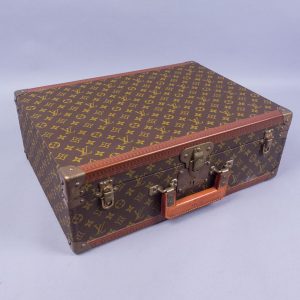
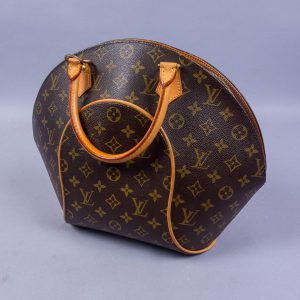
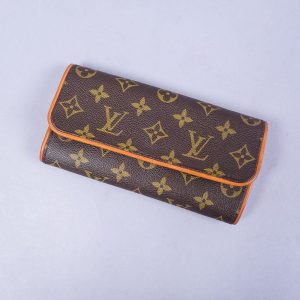
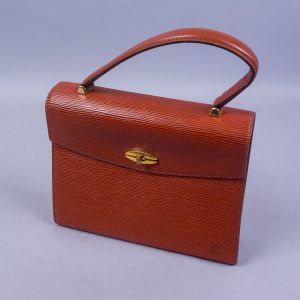
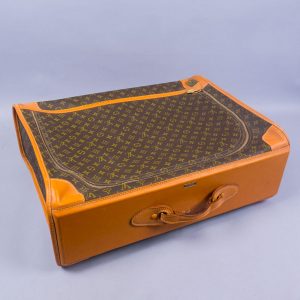
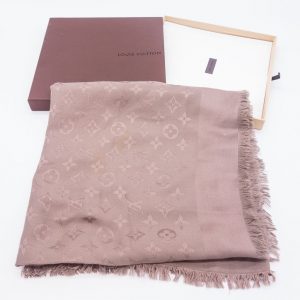
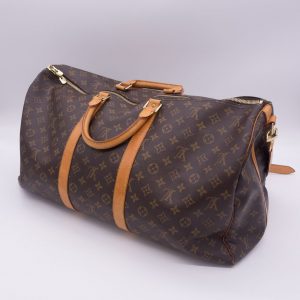
Gaston Vuitton, Greorge Vuitton, handbags, Louis Vuitton, luggage, LVMH, Marc Jacobs, Nicolas Ghesquière, steamer trunk
